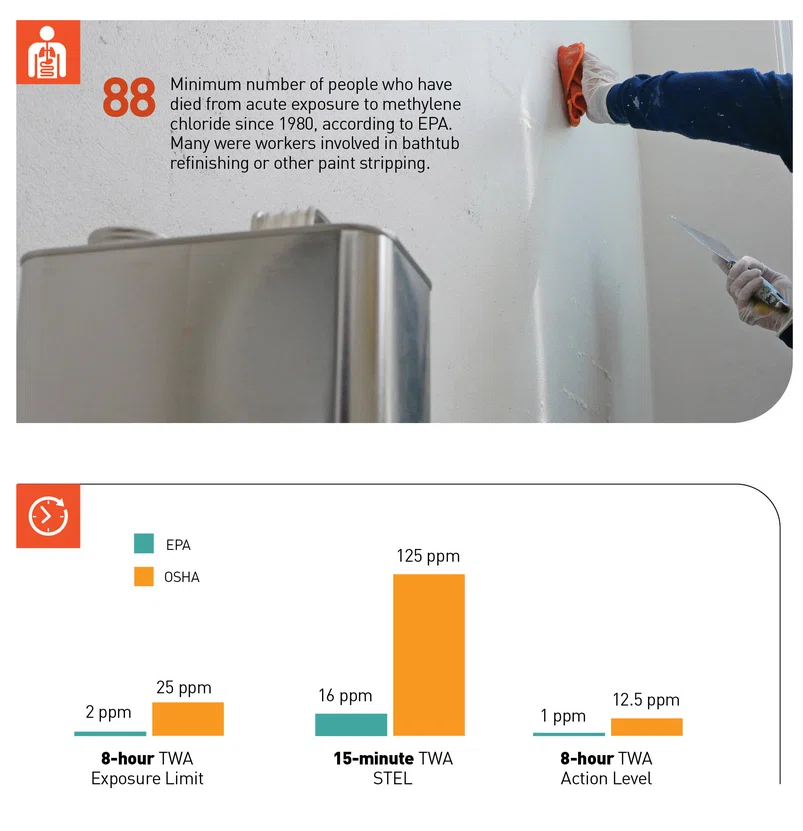

DEPARTMENTS
BY THE NUMBERS
Methylene Chloride Exposure Limits
A compliance guide published recently by EPA outlines major provisions of the agency’s new risk management rule for methylene chloride, which went into effect in July. The rule includes a workplace chemical protection program that aims to help protect workers who are potentially exposed to the chemical during allowed uses. The compliance guide focuses in part on the program’s inhalation exposure limits, which include an EPA existing chemical exposure limit (ECEL), an EPA short-term exposure limit (STEL), and an ECEL action level.
The agency describes the EPA ECEL as “an 8-hour time-weighted average (TWA) regulatory OEL” and explains that the ECEL action level “identifies a level at which certain compliance activities would need to be taken.” Select information about these and other exposure limits for methylene chloride appears below. To learn more, see NewsWatch.
From “A Guide to Complying with the 2024 Methylene Chloride Regulation Under the Toxic Substances Control Act (TSCA)”:
“The ECEL and EPA STEL are similar to the OSHA permissible exposure limit and STEL in that they are regulatory exposure limits, although OSHA PELs do not protect against unreasonable risk as defined under TSCA.”

SOURCES
EPA: “A Guide to Complying with the 2024 Methylene Chloride Regulation Under the Toxic Substances Control Act (TSCA)” (PDF, July 2024).
EPA: “Biden-Harris Administration Finalizes Ban on Most Uses of Methylene Chloride, Protecting Workers and Communities from Fatal Exposure” (April 2024).
NIOSH Pocket Guide to Chemical Hazards: “Methylene Chloride.”
OSHA: Occupational Safety and Health Standards, Toxic and Hazardous Substances, Methylene Chloride.
RELATED
The Synergist: “Methylene Chloride Fatalities” (November 2015).
The Synergist: “Methylene Chloride-Related Fatalities” (June/July 2021).
Tap on the graphic to open a larger version in your browser.